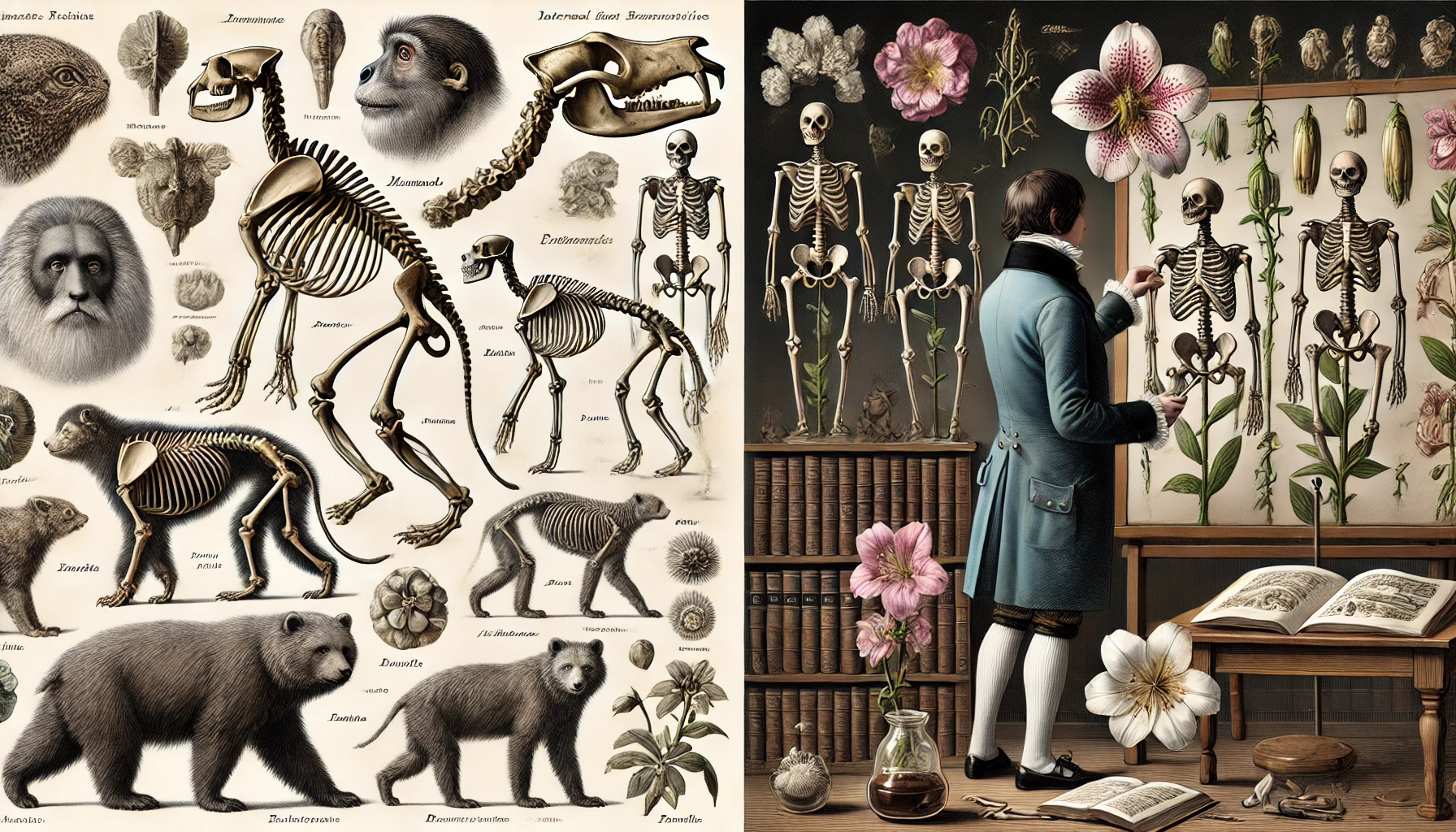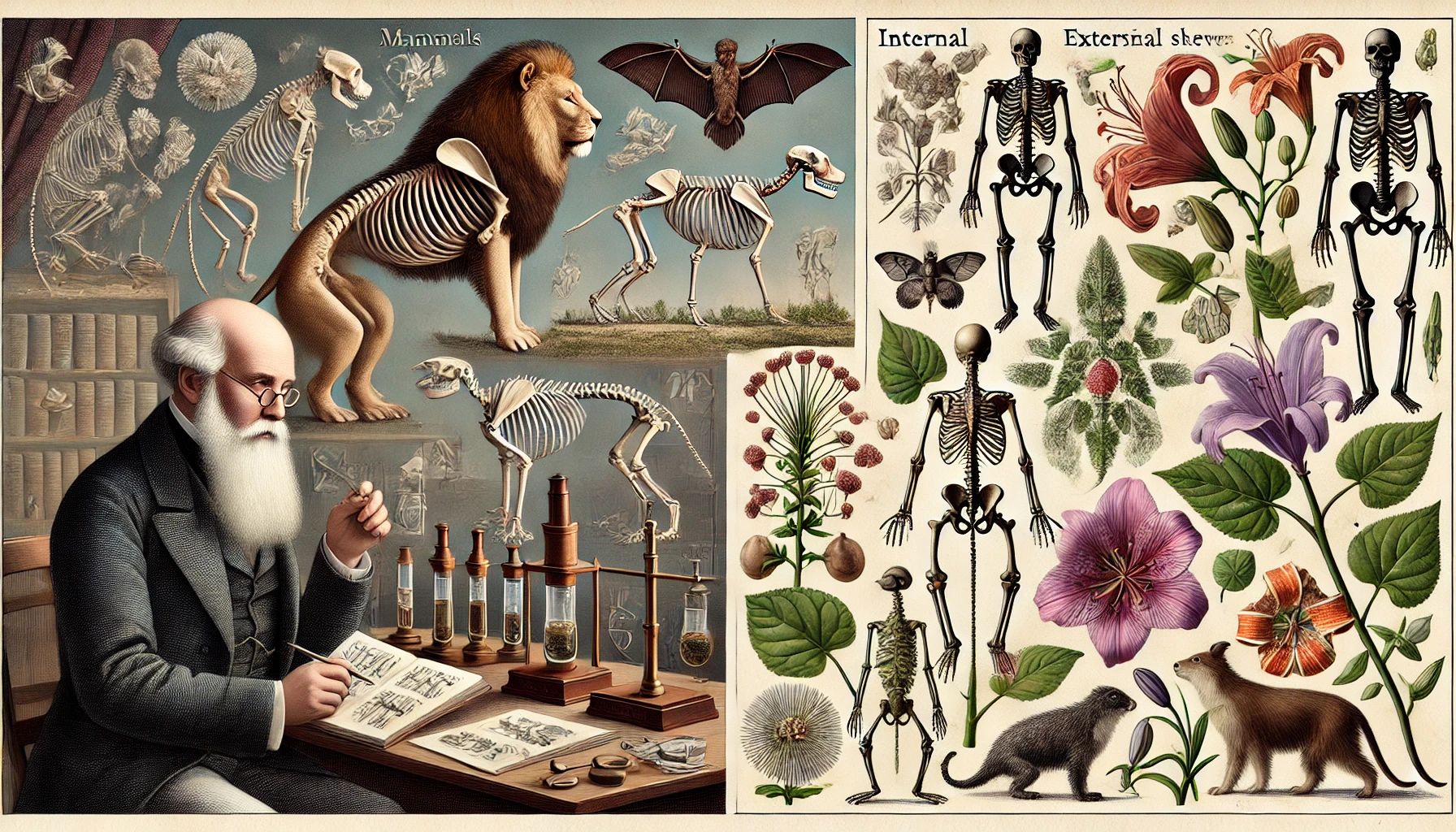
Illustration by DALL·E
Linnæus: Man taken down from his pedestal
The biblical representation of Man as a creature special in the eyes of God suffered a first serious blow in 1735, when Carl Linnæus (1707-1778) classified the human species along animals, labelling it in accordance with his newly devised system of naming using Latin words, as Homo sapiens.
He had classified mammals in the same way he had done for all animals according to the shape of their skeleton, whether external or internal, placing in the same families those that resemble each other most. For plants Linnæus used a classification based on the similarity of the reproductive organs: what their flowers look like and the way their reproductive apparatus is organised.
Here what happened in the words of Isabelle Charmantier:
“Linnæus was the first naturalist to include man within the animal kingdom. In 1735, the class into which Linnæus inserted man was called Quadrupeds, and the order, Anthropomorpha. These names Linnæus would change to Mammals and Primates later on in his career. The order of Anthropomorpha contained the genera Homo (humans), Simia (apes) and Bradypus (sloths).
The choice to include humans within animals and quadrupeds was not welcomed by everyone. In a letter dated 1 September 1735, the Dutch naturalist Gronovius told Linnæus that he disagreed with his decision to include humans under Quadrupeds ‘For although Man ranks first among the animals, he should in fact be considered to excel all other living beings which were created by God to Man’s delight and benefit.’ In another letter to the St Petersburg naturalist Johann Georg Gmelin some 12 years after the first publication of Systema naturae, Linnæus mentioned the persistent irritation expressed by scholars, yet he challenged Gmelin and the rest of the world to name a generic difference between man and ape, based on the principles of natural history.
Having placed humans within the animal kingdom, Linnæus distinguished them from other animals in the same order of Anthropomorpha by the ability to ‘know thyself’ (‘Nosce te ipsum’). This would lead Linnæus to attribute the specific epithet sapiens to the genus Homo when he began to use his binomial nomenclature in the 1750s. He then proceeded to classify humans further, as he did with other organisms” *.
Ignoring the essential difference that the possession of a spirit creates between them in the Christian representation, Linnæus acknowledged the similarities between Homo sapiens and the anthropoid apes and declared that they belonged to a single family. Homo sapiens got this way effectively stripped of the privileged image assumed by the Christian vision, according to which the seventh day had been entirely devoted to his creation.
Here we have, with Linnæus classifying humans as animals, humankind being united with a sizeable chunk of nature. With the creation of the 6th and 7th days, two separate processes, being now seen as a shared single one: Man stripped from the concept of having been uniquely created in God’s image, being placed within the natural order instead of above it.
=========
* Isabelle Charmantier, “Linnæus and Race”, The Linnean Society of London, 3 septembre 2020

Illustration by DALL·E